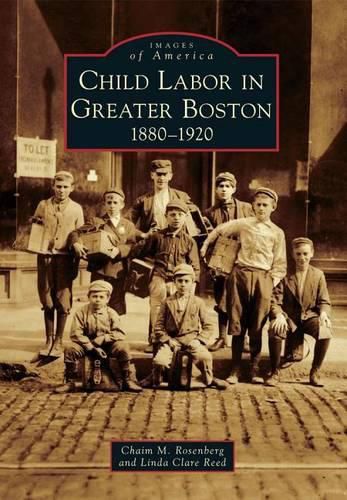Readings Newsletter
Become a Readings Member to make your shopping experience even easier.
Sign in or sign up for free!
You’re not far away from qualifying for FREE standard shipping within Australia
You’ve qualified for FREE standard shipping within Australia
The cart is loading…






From its earliest days, Boston decreed that its children be taught to read and write English and understand the laws. In 1826, free and compulsory education was introduced. The wish to educate the young conflicted with the great need for unskilled labor in the fields and factories. With adult wages low, schoolchildren helped their families by selling newspapers, shining shoes, hawking goods, or scavenging. On reaching 14 years of age, many children left school to find full-time work. Fearing that these children would end up in low-paying, dead-end jobs, Boston Public Schools added trade schools to teach craft skills–carpentry, printing, and metalwork for boys; dressmaking, cooking, and embroidery for girls. The national struggle to ban child labor began in the mid-19th century and ended with the passage of the Fair Labor Standards Act of 1938. This book describes the efforts in Boston and surrounding towns to keep children in school, at least until age 16, before permitting them to start work. The bulk of the images included were taken by Lewis Wickes Hine during his several visits to Boston between 1909 and 1917.
$9.00 standard shipping within Australia
FREE standard shipping within Australia for orders over $100.00
Express & International shipping calculated at checkout
From its earliest days, Boston decreed that its children be taught to read and write English and understand the laws. In 1826, free and compulsory education was introduced. The wish to educate the young conflicted with the great need for unskilled labor in the fields and factories. With adult wages low, schoolchildren helped their families by selling newspapers, shining shoes, hawking goods, or scavenging. On reaching 14 years of age, many children left school to find full-time work. Fearing that these children would end up in low-paying, dead-end jobs, Boston Public Schools added trade schools to teach craft skills–carpentry, printing, and metalwork for boys; dressmaking, cooking, and embroidery for girls. The national struggle to ban child labor began in the mid-19th century and ended with the passage of the Fair Labor Standards Act of 1938. This book describes the efforts in Boston and surrounding towns to keep children in school, at least until age 16, before permitting them to start work. The bulk of the images included were taken by Lewis Wickes Hine during his several visits to Boston between 1909 and 1917.